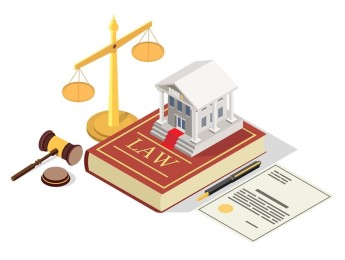Introduction
Website Terms and Conditions serve as the foundation of the legal relationship between website operators and users. They outline the rules, responsibilities, and obligations that govern user interactions with the website and its services. In today's digital landscape, where online activities are becoming increasingly complex and regulated, having clear and comprehensive Terms and Conditions is essential for website owners to protect their interests, ensure legal compliance, and establish trust with users.
This article explores the significance of Website Terms and Conditions, delving into why they are important, what key elements they should include, how users can accept them, and how often they should be updated. By understanding these critical aspects, website owners can develop and maintain effective Terms and Conditions that not only protect their legal rights but also enhance the user experience and promote transparency in online interactions. Let's dive deeper into the world of Website Terms and Conditions and their role in shaping the digital landscape.
What are Website Terms and Conditions?
Website Terms and Conditions, often referred to as Terms of Service (TOS) or Terms of Use (TOU), are a set of rules and guidelines that users must agree to abide by in order to use a website or online service. These terms outline the rules, responsibilities, rights, and obligations of both the website operator (or owner) and the users accessing or interacting with the website. Website Terms & Conditions typically cover a wide range of topics, including:
- User Agreement: Describes the agreement between the website operator and the user regarding the use of the website.
- Use of Services:Details what services or features are offered by the website and how they may be used.
- User Responsibilities: Outlines what actions or behaviors are expected of users while using the website, such as compliance with laws, respect for intellectual property rights, and adherence to community guidelines.
- Intellectual Property: Clarifies ownership and permissible use of content, trademarks, logos, and other intellectual property displayed on the website.
- Privacy and Data Collection: Explains how user data is collected, stored, used, and protected by the website, including information on cookies, tracking technologies, and data sharing practices.
- Liability and Disclaimers: Limits the website's liability for certain actions or events, and includes disclaimers regarding warranties, accuracy of information, and availability of services.
- Governing Law: Specifies which jurisdiction's laws govern the interpretation and enforcement of the Terms and Conditions.
- Termination: Describes circumstances under which the website operator or user can terminate the agreement, and the consequences of termination.
Table 1: Key Aspects of Website Terms and Conditions
Aspect | Description |
User Agreement | Describes the agreement between the website operator and the user regarding the use of the website. |
Use of Services | Details what services or features are offered by the website and how they may be used. |
User Responsibilities | Outlines expected actions or behaviors of users, such as compliance with laws and respect for intellectual property rights and community guidelines. |
Intellectual Property | Clarifies ownership and permissible use of content, trademarks, logos, and other intellectual property displayed on the website. |
Privacy and Data Collection | Explains how user data is collected, stored, used, and protected by the website, including information on cookies, tracking technologies, and data sharing practices. |
Liability and Disclaimers | Limits the website's liability for certain actions or events, and includes disclaimers regarding warranties, accuracy of information, and availability of services. |
Governing Law | Specifies which jurisdiction's laws govern the interpretation and enforcement of the Terms and Conditions. |
Termination | Describes circumstances under which the website operator or user can terminate the agreement, and the consequences of termination. |
Website Terms and Conditions are legally binding agreements that users implicitly agree to by accessing or using the website. They serve to protect the website operator's interests, establish expectations for user behavior, and provide transparency about how the website operates. Users are typically required to accept these terms either by explicitly agreeing to them (e.g., by checking a box) or by simply accessing and using the website, depending on the jurisdiction and the specific terms set forth by the website operator.
Why are Terms and Conditions Important for Websites?
Terms and Conditions are crucial for websites due to several important reasons:
- Legal Protection: Terms and Conditions establish a legally binding contract between the website operator and users. They define the rights and responsibilities of both parties, helping to protect the website owner from legal disputes and liabilities.
- User Guidelines: Terms and Conditions set clear guidelines for users on how they should interact with the website. This includes acceptable behavior, prohibited activities, and rules for using specific features or services.
- Limitation of Liability:Terms and Conditions often include disclaimers and limitations of liability, specifying the extent to which the website owner can be held responsible for damages, losses, or misuse of the website by users.
- Intellectual Property Protection:These terms clarify ownership of content, trademarks, and intellectual property displayed on the website. They also outline permissible uses of such materials by users, helping to protect the website's brand and assets.
- Privacy and Data Handling: Terms and Conditions disclose how user data is collected, stored, and used by the website. This helps in establishing transparency and compliance with privacy laws, such as GDPR or CCPA.
- Enforcement of Policies:Website Terms and Conditions provide a framework for enforcing other policies, such as Privacy Policies, Cookie Policies, and Community Guidelines. They allow the website operator to enforce rules and take action against users who violate these terms.
- Regulatory Compliance: Depending on the nature of the website and its audience, Terms and Conditions ensure compliance with relevant laws and regulations governing online activities, such as consumer protection laws, data protection laws, and intellectual property rights.
- User Consent and Agreement: By requiring users to accept the Terms and Conditions before using the website, the operator obtains explicit consent from users regarding the rules and policies governing their use of the platform.
- Risk Management:Terms and Conditions mitigate risks associated with legal disputes, unauthorized use of content, or misuse of the website's services. They outline procedures for resolving disputes and handling complaints.
Terms and Conditions provide a legal framework that benefits both website operators and users by establishing expectations, protecting rights, ensuring compliance, and reducing potential legal risks associated with online activities. They are essential for maintaining transparency, trust, and legal compliance in the digital environment.
What Legal Aspects Should Website Owners Consider?
Website owners should consider several important legal aspects when developing and maintaining their websites. These aspects are critical for ensuring compliance with laws and regulations, protecting intellectual property, managing user data responsibly, and minimizing legal risks. Here are key legal aspects that website owners should consider:
Privacy Policies:
Website owners must create and maintain a Privacy Policy that discloses how user data is collected, used, stored, and protected. This policy should comply with applicable privacy laws such as GDPR (for users in the EU) or CCPA (for users in California, USA).
Terms and Conditions (Terms of Use):
Developing comprehensive Terms and Conditions (also known as Terms of Use or Terms of Service) that outline user rights, responsibilities, limitations of liability, and dispute resolution mechanisms.
Intellectual Property Protection:
Ensuring proper protection of intellectual property rights, including trademarks, copyrights, and patents associated with the website's content, logos, designs, and software.
Compliance with Consumer Protection Laws:
Adhering to consumer protection laws that regulate online transactions, advertising practices, and consumer rights related to purchasing goods or services through the website.
Data Protection and Security:
Implementing robust data protection measures to safeguard user data against unauthorized access, breaches, or misuse. This includes encryption, secure storage practices, and compliance with data security standards.
Accessibility Compliance:
Ensuring that the website is accessible to individuals with disabilities as per accessibility standards such as the Web Content Accessibility Guidelines (WCAG).
Digital Marketing Regulations:
Complying with laws governing digital marketing practices, including email marketing regulations (e.g.,CAN-SPAM Act) and advertising disclosure requirements.
E-commerce Regulations:
Understanding and adhering to e-commerce laws related to online transactions, payment processing, consumer rights, and taxation.
User Consent and Cookie Policies:
Implementing mechanisms for obtaining user consent for the use of cookies and tracking technologies, in accordance with cookie consent laws (e.g., EU Cookie Law).
DMCA Compliance:
Understanding the Digital Millennium Copyright Act(DMCA) provisions for addressing copyright infringement claims and providing a mechanism for reporting infringing content.
Children's Online Privacy Protection:
Complying with the Children's Online Privacy Protection Act(COPPA) if the website is directed towards children under the age of 13, including obtaining parental consent for collecting personal information from minors.
Dispute Resolution:
Specifying procedures for resolving disputes with users, including arbitration or mediation clauses in the Terms and Conditions.
International Legal Considerations:
Addressing legal implications of operating a website across international borders, including jurisdictional issues and cross-border data transfers.
Table 2:Legal Aspects to Consider for Website Owners
Legal Aspect | Description |
Privacy Policies | Creating and maintaining a Privacy Policy that discloses data collection, use, storage, and protection, compliant with GDPR or CCPA regulations. |
Terms and Conditions (Terms of Use) | Developing comprehensive Terms and Conditions outlining user rights, responsibilities, liability limits, and dispute resolution mechanisms. |
Intellectual Property Protection | Ensuring proper protection of trademarks, copyrights, and patents associated with website content, logos, designs, and software. |
Compliance with Consumer Protection Laws | Adhering to laws regulating online transactions, advertising, and consumer rights related to purchasing goods/services through the website. |
Data Protection and Security | Implementing robust measures to safeguard user data against unauthorized access, breaches, and ensuring compliance with data security standards. |
Accessibility Compliance | Ensuring website accessibility for individuals with disabilities per standards like Web Content Accessibility Guidelines (WCAG). |
Digital Marketing Regulations | Compliance with laws governing digital marketing practices, including email marketing regulations (e.g., CAN-SPAM Act) and advertising disclosures. |
E-commerce Regulations | Understanding and adhering to laws governing online transactions, payment processing, consumer rights, and taxation related to e-commerce. |
User Consent and Cookie Policies | Implementing mechanisms for obtaining user consent for cookies and tracking technologies in compliance with cookie consent laws (e.g., EU Cookie Law). |
DMCA Compliance | Understanding DMCA provisions for addressing copyright infringement claims and providing a mechanism for reporting infringing content. |
Children's Online Privacy Protection | Compliance with COPPA if the website targets children under 13, including obtaining parental consent for collecting personal information from minors. |
Dispute Resolution | Specifying procedures for resolving disputes with users, including arbitration or mediation clauses in the Terms and Conditions. |
International Legal Considerations | Addressing legal implications of operating across international borders, including jurisdictional issues and cross-border data transfers. |
Website owners should consult legal professionals specializing in internet law or e-commerce regulations to ensure that their websites are compliant with relevant laws and adequately protected against legal risks. Regular audits and updates to legal policies are recommended to keep pace with evolving legal requirements and industry standards.
How Can Users Accept and Agree to Terms and Conditions?
Users can accept and agree to Terms and Conditions (also known as Terms of Service or Terms of Use) in several ways, depending on the website's design and functionality. The method of acceptance should be clear, accessible, and legally enforceable. Here are common methods for users to accept and agree to Terms and Conditions:
Clickwrap Agreement:
The most common method is the "clickwrap" agreement, where users are required to actively click a checkbox or button to indicate their acceptance of the Terms and Conditions before proceeding with using the website or registering an account. The checkbox is typically positioned near a statement that explicitly states that by checking the box, the user agrees to the Terms and Conditions.
Scroll Wrap Agreement:
In a "scroll wrap" agreement, users are required to scroll through the Terms and Conditions displayed on the screen before being able to proceed further on the website. Acceptance is inferred from the act of scrolling through the terms, indicating that the user has reviewed and agreed to them.
Browse wrap Agreement:
A "browse wrap" agreement involves displaying a link to the Terms and Conditions somewhere on the website (usually in the footer), without requiring users to actively agree to them. Instead, acceptance is assumed based on the user's continued use of the website. However, browse wrap agreements are generally less enforceable compared to clickwrap or scroll wrap agreements, especially if the link to the terms is not prominently displayed.
Account Registration:
Users may be required to create an account on the website, and acceptance of the Terms and Conditions is part of the registration process. By submitting their registration information, users are deemed to have agreed to the Terms and Conditions.
Applicable Law Notification:
Some websites display a notice informing users that by accessing or using the website, they agree to be bound by the Terms and Conditions. This method is typically used in conjunction with other acceptance mechanisms, such as clickwrap or scroll wrap agreements.
In-App Agreements:
For mobile apps, users may be presented with the Terms and Conditions during the app installation process or upon first launch. Acceptance is typically required before the user can proceed with using the app.
E-signatures:
In certain contexts, such as for more formal agreements or transactions, users may be required to provide electronic signatures to indicate their acceptance of the Terms and Conditions.
It's important for website owners to choose an acceptance method that ensures users have a reasonable opportunity to review the terms before agreeing to them. The method used should be legally valid and enforceable to establish a binding contract between the website operator and the user. Additionally, it's recommended to clearly notify users about any updates or changes to the Terms and Conditions and provide mechanisms for users to review the latest version of the terms.
How Often Should Website Terms and Conditions be Updated?
Website Terms and Conditions should be regularly reviewed and updated to ensure they remain accurate, compliant with applicable laws, and reflective of any changes in the website's services or policies. The frequency of updates may vary depending on factors such as legal requirements, industry standards, and the nature of the website's operations. Here are some considerations for determining how often Terms and Conditions should be updated:
Changes in Laws and Regulations:
Update the Terms and Conditions whenever there are changes in relevant laws and regulations that impact the website's operations or user rights. This includes privacy laws, consumer protection laws, and regulations governing data protection.
Updates to Website Services:
If there are significant changes or additions to the website's services, features, or functionalities, update the Terms and Conditions to reflect these updates. This ensures that users are informed about how the changes affect their use of the website.
Policy Review Schedule:
Establish a regular schedule for reviewing and updating legal policies, including Terms and Conditions, Privacy Policy, and Cookie Policy. Quarterly or bi-annual reviews are common, but the frequency may vary based on the website's activities and legal landscape.
User Feedback or Complaints:
Take into account user feedback, complaints, or inquiries related to the Terms and Conditions. If users raise concerns about certain provisions or ambiguities in the terms, consider updating them to address these issues.
Industry Best Practices:
Stay informed about industry best practices and standards for legal policies. If there are new guidelines or recommendations relevant to the website's industry, consider updating the Terms and Conditions accordingly.
Major Events or Incidents:
Update the Terms and Conditions in response to major events or incidents that impact the website's operations, user privacy, or security. For example, data breaches or security vulnerabilities may necessitate updates to the Terms and Conditions.
Changes in Business Structure:
If there are changes in the website's ownership, structure, or corporate policies, review and update the Terms and Conditions to reflect these changes.
Communicate Changes to Users:
When updating the Terms and Conditions, clearly communicate the changes to users and provide them with an opportunity to review the updated terms. This may involve sending notifications via email or displaying a notice on the website.
Ultimately, the goal of updating Terms and Conditions is to maintain transparency, legal compliance, and user trust. Regular updates ensure that the terms accurately reflect the website's policies and practices, reducing the risk of misunderstandings or disputes with users. Website owners should work closely with legal professionals to ensure that updates to the Terms and Conditions are properly implemented and communicated to users.
Conclusion
In conclusion, Website Terms and Conditions serve as a cornerstone for establishing legal clarity and user expectations in the online realm. These documents are essential for protecting website operators from liability, defining user rights and responsibilities, and ensuring compliance with relevant laws and regulations. By maintaining comprehensive and up-to-date Terms and Conditions, website owners can build trust with users, manage disputes effectively, and adapt to evolving legal landscapes. Regular updates to Terms and Conditions are imperative to reflect changes in services, policies, or legal requirements, and clear communication of these updates is essential to maintain transparency and user confidence. Ultimately, well-crafted Terms and Conditions contribute to a secure and reliable online experience for both website operators and users, reinforcing the integrity of digital interactions and fostering a positive online community.

























